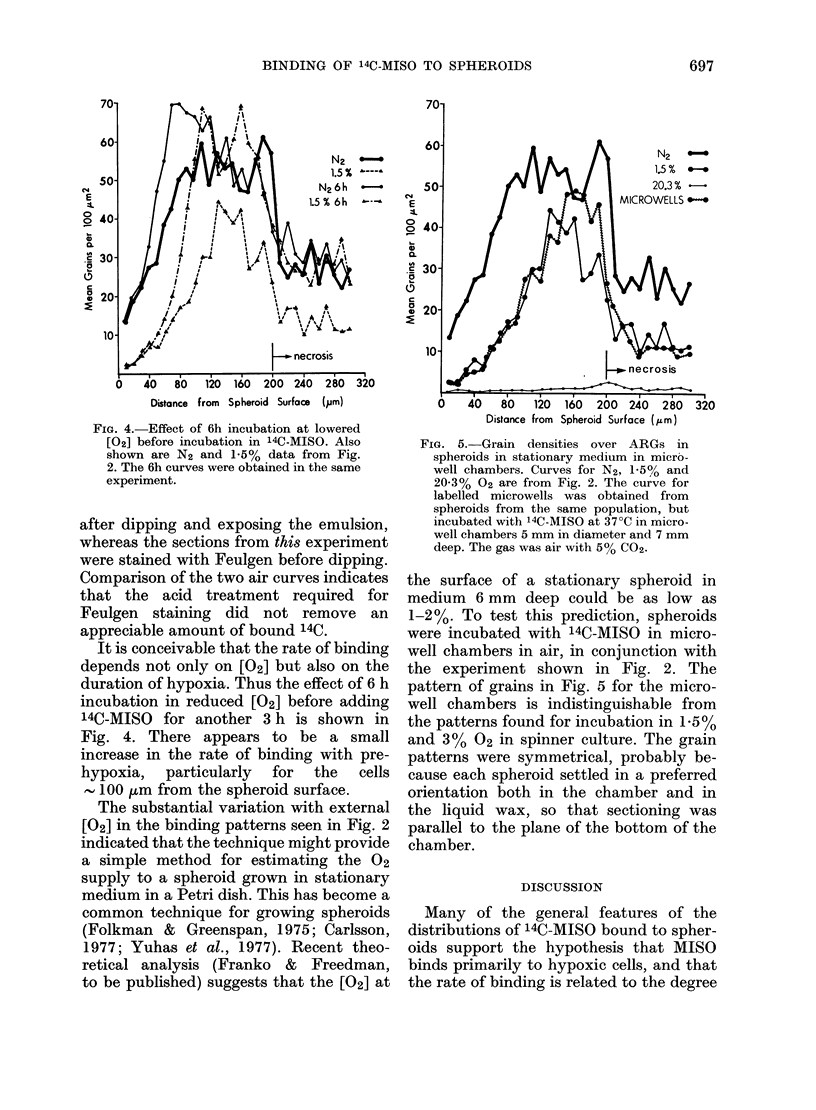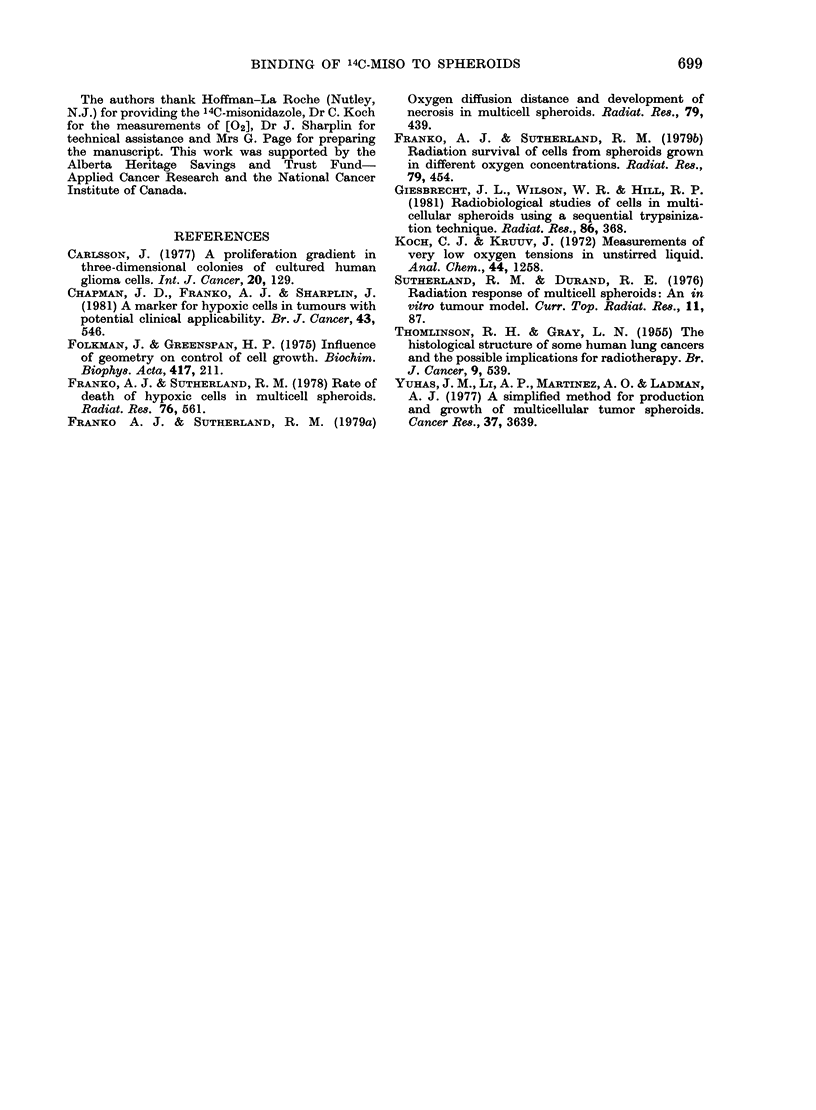Abstract
The metabolism-induced binding of 14C-labelled misonidazole (MISO) to hypoxic V79 cells in multicell spheroids has been quantitated using autoradiography. Hypoxia was shown to be the major determinant of the rate of binding. Maximally hypoxic cells bound MISO several times more rapidly than necrotic material in the centre of the spheroids, and up to 50 times more rapidly than well oxygenated cells. The rate of binding to chronically hypoxic cells at the edge of the necrotic centre was 20 times less than to similar cells in other spheroids made maximally hypoxic with N2. This difference is consistent with the greater radio-sensitivity of the chronically hypoxic cells, which is a consequence of their intermediate level of oxygenation. The results indicated that the ability to bind MISO might have considerable potential as a marker for hypoxic cells in tumours. However, some binding patterns cannot be explained by the simplest model of O2 diffusion. It may be necessary to invoke more complex models of O2 diffusion or metabolic gradients within the spheroid which affect the rate of binding.
Full text
PDF





Images in this article
Selected References
These references are in PubMed. This may not be the complete list of references from this article.
- Carlsson J. A proliferation gradient in three-dimensional colonies of cultured human glioma cells. Int J Cancer. 1977 Jul 15;20(1):129–136. doi: 10.1002/ijc.2910200120. [DOI] [PubMed] [Google Scholar]
- Chapman J. D., Franko A. J., Sharplin J. A marker for hypoxic cells in tumours with potential clinical applicability. Br J Cancer. 1981 Apr;43(4):546–550. doi: 10.1038/bjc.1981.79. [DOI] [PMC free article] [PubMed] [Google Scholar]
- Folkman J., Greenspan H. P. Influence of geometry on control of cell growth. Biochim Biophys Acta. 1975 Dec 31;417(3-4):211–236. doi: 10.1016/0304-419x(75)90011-6. [DOI] [PubMed] [Google Scholar]
- Franko A. J., Sutherland R. M. Oxygen diffusion distance and development of necrosis in multicell spheroids. Radiat Res. 1979 Sep;79(3):439–453. [PubMed] [Google Scholar]
- Franko A. J., Sutherland R. M. Radiation survival of cells from spheroids grown in different oxygen concentrations. Radiat Res. 1979 Sep;79(3):454–467. [PubMed] [Google Scholar]
- Franko A. J., Sutherland R. M. Rate of death of hypoxic cells in multicell spheroids. Radiat Res. 1978 Dec;76(3):561–572. [PubMed] [Google Scholar]
- Giesbrecht J. L., Wilson W. R., Hill R. P. Radiobiological studies of cells in multicellular spheroids using a sequential trypsinization technique. Radiat Res. 1981 May;86(2):368–386. [PubMed] [Google Scholar]
- Yuhas J. M., Li A. P., Martinez A. O., Ladman A. J. A simplified method for production and growth of multicellular tumor spheroids. Cancer Res. 1977 Oct;37(10):3639–3643. [PubMed] [Google Scholar]



